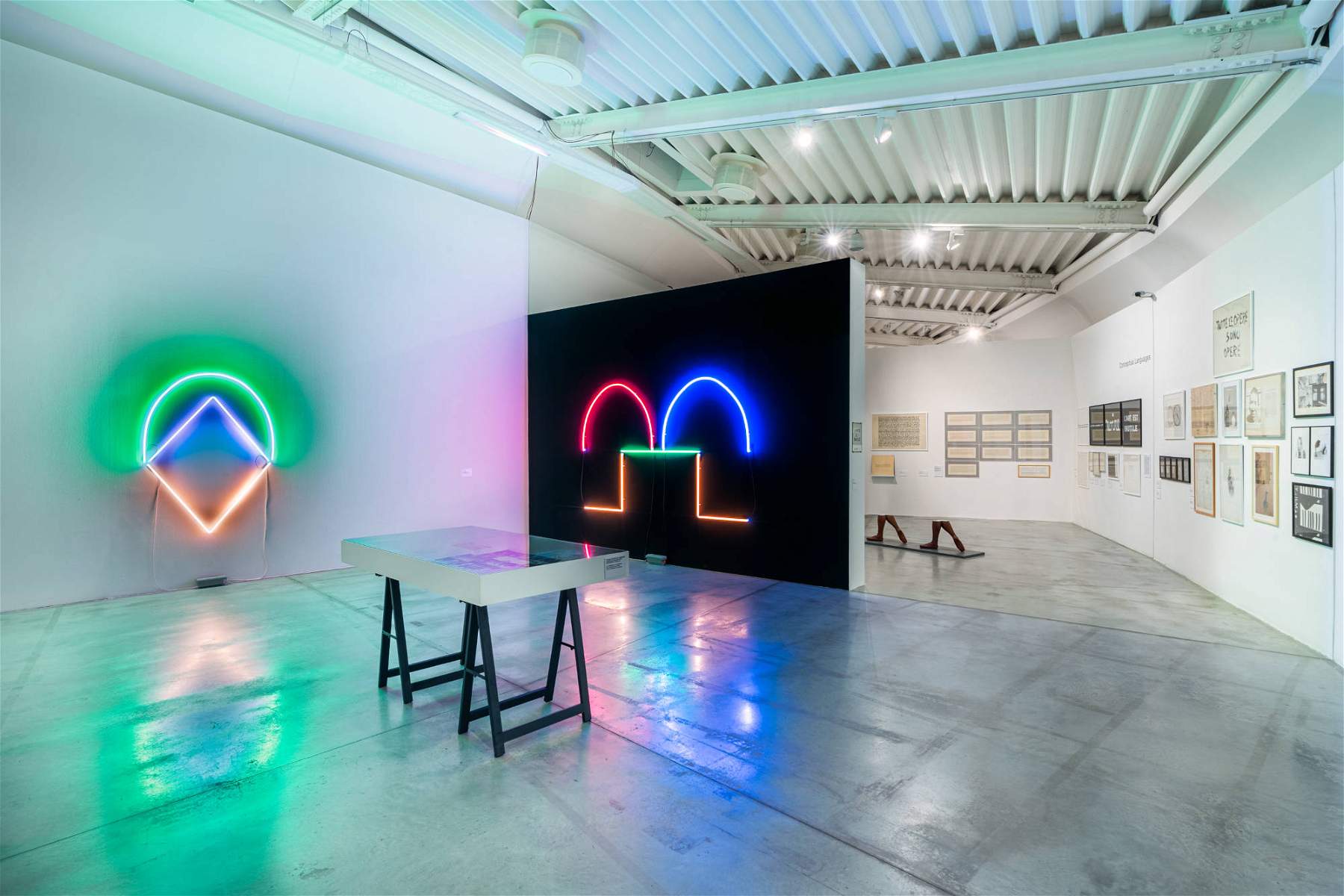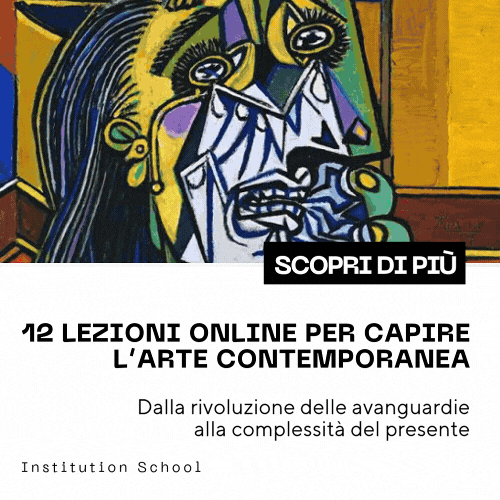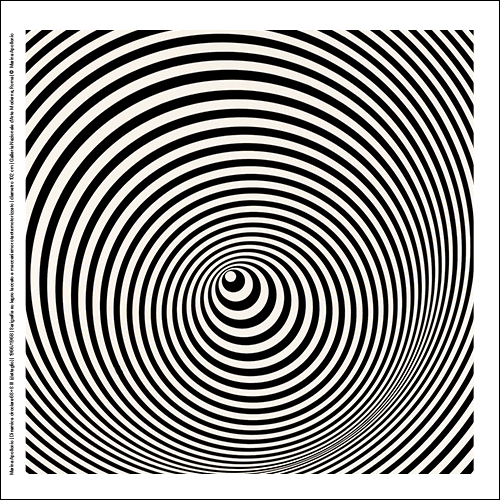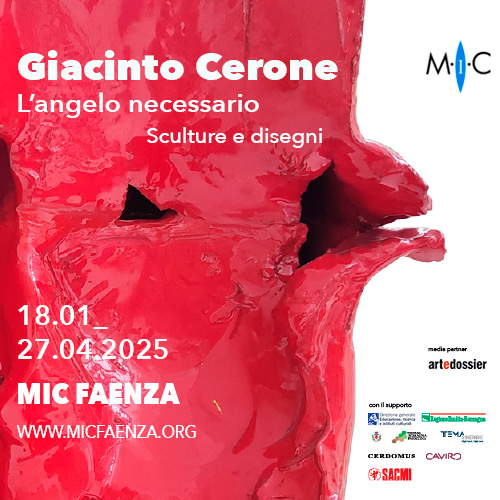At Pecci in Prato, an exhibition commemorates 50 years of Schema Gallery
SCHEMA 50 Una Galleria fra le Neo-Avanguardie (1972-1994), at the Centro Pecci in Prato from June 11 to October 9, 2022, is the title of the first museum exhibition entirely dedicated to the experimental activity of the gallery and the conceptual and anthropological work of Alberto Moretti (Carmignano, Prato, 1922 - 2012), the artist who founded it. Curated by Stefano Pezzato in collaboration with Raul Dominguez, supervised and researched by Desdemona Ventroni and produced by Centro Pecci and CID/Arti Visive, the exhibition presents a wide selection of original works and archival documents to recall what has been the research space of national and international neoavant-gardes in Florence, on the occasion of the centenary of its founder’s birth.
The exhibition follows the recent exhibitions at the Pecci Center devoted to radical architecture, for which Schema was a sounding board in Italy in the early 1970s; on the other hand, it also connects to the figures of Mario Mariotti, a multifaceted Florentine artist who was several times times active in the gallery, and Lara-Vinca Masini, a critic who was attentive to independent artistic experiences such as Schema’s, as well as a friend and associate of Alberto Moretti for more than half a century, both personalities whose archives the museum now holds.
The works on display and archival documents, on the 50th anniversary of its opening, tell the story of the Schema Gallery in Florence, which, since its birth in February 1972, inaugurated by the radical architecture group Superstudio, has stood out for its bold exhibition proposals, contributing, also through its own editorial production (Schema Informazione e Press), to the renewal of the usual instruments of artistic information and communication. A research space oriented toward the promotion of national and international neo-avant-gardes, attentive to coeval experimentation in the fields of theater, film and music, until its closure on 12/31/1994 and celebrated with a performance by Liliana Moro, the gallery organized exhibitions and events focused mainly on conceptual and postconceptual art, radical architecture, performance and happening, anthropological and political art, which it accompanied with public initiatives, including many of a theoretical nature such as meetings, seminars and book presentations, organized with the active participation of artists and the direct involvement of critics and scholars.
The exhibition itinerary is divided into thematic sections (indicated in the exhibition by specific titles), which constitute paragraphs of the Schema Gallery’s cultural experience, bringing out the value of works and documents through associations, juxtapositions, comparisons or focuses for individuals and groups of artists, capable of providing visitors with new keys to interpreting and interpreting this history.
RADICAL ARCHITECTURE The Schema Gallery inaugurated its activities in February 1972 with an exhibition by Superstudio, a Radical Architecture group, which introduced itself by declaring, “our projects/actions are moving more and more away from the physicality of architecture and design and therefore (by circularity of logic) everything we do is getting closer and closer to architecture and design.” Superstudio’s structuring of the exhibition space, with parallel lattice grids between the floor and ceiling, would become a hallmark of the gallery. In October 1972, Ugo La Pietra exhibits there, promoting The Destruction of Disciplines through The Unbalancing System, conceived as “the identification of aesthetic operations capable of decoding, provoking, giving the possibility of breaking preconstituted schemes.” In February 1973 it was the turn of Gianni Pettena on his return from a stay in Salt Lake City, presenting the results of his experiences overseas on “the relationship with the city, the relationship with living today, in a place where the presence of natural elements is particularly relevant.”
EVENTS In May 1972 the Schema Gallery hosted Achille Bonito Oliva for the presentation of his book The Magic Territory. Comportamenti alternativi dell’arte, published by the Florentine publishing house Centro Di, and organized around the author’s “critical confession” a first cycle of events made on different evenings by artists Vettor Pisani, Gino De Dominicis and Jannis Kounellis. The following year an active seminar on avant-garde art organized by Achille Bonito Oliva together with Eugenio Battisti (author of the seminal essay L’antirinascimento and founder of the Museo sperimentale d’arte contemporanea in Genoa, later destined for Turin), then a professor at the Faculty of Architecture in Florence, was held at the Schema Gallery. On that occasion, too, reflections on “behavior in contemporary art” are accompanied by a sequence of ephemeral artistic interventions condensed into a single evening, by Vettor Pisani and Gino De Dominicis with the addition of Giuseppe Chiari.
ACTIONS The exhibition documents memorable actions performed in the early years of the Schema Gallery by body artists such as Vito Acconci, who transforms the exhibition space into an atmospheric Ballroom, and such as Urs Lüthi who performs live musical and photographic solos (The Lonely Saxophone); also dreamlike performances by Terry Fox, who interprets the symbolic theme of the Labyrinth in an anthropological sense; by Joan Jonas who stages a ritual action at Twilight outside the gallery; by Chris Burden who appears behind a curtain as a ghostly Oracle figure detached from the real world; then a literal and figurative happening for pairs of people who go up and down reflecting each other, conceived and directed in Florence by Allan Kaprow. As a counterpoint to the live actions, paradoxical mirror photographs by John Baldessari are also presented, aimed at demonstrating the linguistic potential of images associated with the arbitrariness of the artist’s proposed attempts.
CONCEPTUAL ART Already from the first exhibitions the “conceptual” line of Schema Gallery is identified. Art confronts the areas of philosophical dialectics and experimental poetry, actor’s theater, music and contemporary photography. The artists highlight “mental processes” that underlie the formation of their works; they consequently reduce the physical and visual components, the materiality of the works to encourage an intellectual involvement of the viewer invited to read, analyze, reflect. Vincenzo Agnetti titles his research on language Propositions, a term derived from mathematical logic; Maurizio Nannucci composes Verbal Definitions and Chromatic Nomenclatures; in these cases, as Agnetti stated, “the medium becomes message and the artist becomes medium.” Massimo Nannucci photographically investigates the “false/true” dichotomy; Paolo Masi turns his analysis to the space, exhibition as well as that of the work, through “measures and modifications”; Alberto Pirelli and Fulvio Salvadori draw up a manifesto on their artistic ideas, while the former proclaims L’arte come l’ho trovato. On the other hand, in a gallery performance Luigi Ontani interprets the sarcastic expression Spirit of Potato. Carlo Bertocci conceptually interprets the theme of vision, and James Lee Byars addresses a letter to Moretti in the form of a work of art.
CONCEPTUAL LANGUAGES Among the languages adopted by the artists stand out the hundreds of Pages with words and phrases composed as a single score by experimental musician Giuseppe Chiari, the author of verbal and photographic trespasses as well as performances and videos, also the creator of paradoxes such as L’arte è facile and tautologies such as Tutte le opere sono opere. By exhibiting at Schema Gallery Mario Mariotti identifies himself for the first time as an “artist,” reflecting on the parallel identity of his wife Italia Nativo who was defined as an “artist” when she danced at the Teatro Comunale in Florence, the same as the floor plan used by Mariotti to create a “sale of assigned and numbered seats” that transfers the condition of the Theater from a context or container of art to an object and project of the artist. Ketty La Rocca’s parallel linguistic and visual experiments, in addition to constituting experiences of literal, corrosive Reductions of images, take on the character of “sign-gestures” that take up the theme by singling out among the best-known, habitual and homologated images in order to absorb and deconstruct them.
CONCEPTUAL ART The significant international artistic presence is one of the hallmarks of Schema Gallery’s activity. Since the first years of its opening, the gallery has offered original works by the major protagonists of the “dematerialization” taking place in Conceptual Art: the imaginary narrative made by Les Levine at the Porta Rossa hotel where he was staying in Florence, juxtaposed in the gallery with analyses of the media event of the moment, namely the resignation of U.S. President Nixon (Presidential Ritual); the images and “advertisements” of Dan Graham, such as the informative analysis of editorial technique in Schema and the photographic exploration of systematic repetitions of suburban developments in Homes for America, or texts investigating the art distribution system; then the reflections and textual installations of Art & Language and Zvi Goldstein, considered among the most radical reductions of artworks to pure concepts and theoretical discourses. In the age of mass-media pervasiveness, art is reflected and disseminated through print, advertising, publishing, becoming linguistic analysis and publicity, questioning itself.
CONCEPTUAL LANGUAGES Joseph Kosuth is considered a theorist of art as a “product of thought,” which he places in relation to the text and context of reference. Other protagonists of an attitude to emphasize the dialectical process of idea formation are Dan Graham, Douglas Huebler, Mel Bochner, who before Kosuth had solo exhibitions at the Schema Gallery; also Laurence Weiner who considers language as image and Mel Ramsden, later merged into the Art & Language group, who makes textual and visual tautologies like Kosuth. Other protagonists of these researches are the emphatic Ben Vautier, exponent of the Fluxus movement as well as the shamanic Joseph Beuys, the minimalist Sol LeWitt and the semiotic Julien Blaine, while in Italy intellectual artists such as Giulio Paolini or Michele Zaza stand out. In 1974, for the exhibition Returned to Sender, the Schema Gallery collected materials of the most varied kind (texts, music, publications, photographs, videos and films, projects and ideas, some of which are included in the current exhibition) proposed by more than two hundred artists and later flowed into the publication of “Schema Information 2,” an editorial synthesis of the multiplicity of “languages” of the national and international Neoavantgardes of that time.
OTHER CONCEPTUAL FORMS Highlighting the processes of making or conversely dematerializing works contributed in the 1970s other artists proposed by the Schema Gallery: Anna Oppermann constructed intricate Ensembles with clippings, annotations, photographs and objects collected and later reproduced in kaleidoscopic assemblage fragmentations or replicas, understood by the artist as “still lifes.” Dorothee von Windheim used an impression technique through plaster detachments to bring architectural relics considered as “layered memories” back to canvas; Giuseppe Penone, a leading exponent of Arte Povera, shaped a personal “bodily geography” to explore the physical, tactile rather than visual limits of his own skin. Colored neon inspired by Florentine architecture also shines in the exhibition, and mythical character drawings by postminimalist Keith Sonnier emerge from the black background.
BEYOND THE CONCEPTUAL Between the 1970s and 1980s new figurative or narrative trends emerged. Dennis Oppenheim, moving beyond a traditional sculptural conception in favor of multiform creations, presents a mechanized marionette in the gallery along with a series of projects for environmental installations, sometimes to be animated with video projections, as well as ephemeral projects in outdoor spaces. Schema Gallery is also open to comparisons with the art of the past: next to the literal intersection of earth and sky proposed by Hreinn Fridfinnsson, Marcello Jori reproduces and chromatically varies a sunset landscape painted by Seurat, intended as a “work restored to nature.” Verita Monselles reverses Canova’s sculpture ofPaolina Borghese as Venus Vincitrice, transforming the neoclassical original into a “feminist art emblem”; Roberto Barni traces the classical silhouette of Praxiteles’ sculpture of Hermes , interpreting it as a “remnant of the past and premise of the future.” James Coleman describes the inner conflict of boxing champion Gene Tunney, presented on video as a Platonic disagreement between “identity, continuity and unity of the self”; Gilberto Zorio, another Arte Povera exponent invited to Schema Gallery, dedicates a red-painted leather Star to Alberto Moretti, an “energetic image” and cosmic par excellence. The gallery’s openness to different plastic and pictorial explorations includes the return to the gallery of artists such as Dorothea Rockburne, who in the early 1970s conceived original Drawings that make themselves through their own characteristics, and the Art & Language group that in the late 1980s recovered painting on the basis of graphic-spatial relationships.
The artists in the exhibition.
Vito Acconci, Vincenzo Agnetti, Art & Language, John Baldessari, Lanfranco Baldi, Roberto Barni, Angelo Barone, Luciano Bartolini, Carlo Bertocci, Joseph Beuys, Lapo Binazzi (UFO), Julien Blaine, Mel Bochner, Anna Valeria Borsari, Chris Burden, James Lee Byars, Luciano Caruso, Giuseppe Chiari, Claudio Cintoli, James Coleman, Fabrizio Corneli, Claudio Costa, Gino De Dominicis, Antonio Dias, Ronaldo Fiesoli, Terry Fox, Hreinn Fridfinnsson, Zvi Goldstein, Dan Graham, Andrea Granchi, Keith Haring, David Hockney, Douglas Huebler, Il Carrozzone, Alessandro Jasci, Joan Jonas, Marcello Jori, Allan Kaprow, Joseph Kosuth, Jannis Kounellis, Frances Lansing, Ugo La Pietra, Ketty La Rocca, Les Levine, Sol LeWitt, Urs Lüthi, Luciana Majoni, Mario Mariotti, Paolo Masi, Verita Monselles, Alberto Moretti, Liliana Moro, Massimo Nannucci, Maurizio Nannucci, Luigi Ontani, Dennis Oppenheim, Anna Oppermann, Charlemagne Palestine, Giulio Paolini, Claudio Parmiggiani, Giuseppe Penone, Gianni Pettena, Rodolfo Pilari, Alberto Pirelli, Vettor Pisani, Ritva Raitsalo, Mel Ramsden, Dorothea Rockburne, Lucia Romualdi, Fulvio Salvadori, Tony Shafrazi, Terry Smith, Keith Sonnier, John Stezaker, Franco Summa, Superstudio, Jerzy Trelinski, Ben Vautier, Antonio Violetta, Dorothee von Windheim, William Wegman, Laurence Weiner, Michele Zaza, Gilberto Zorio
 |
| At Pecci in Prato, an exhibition commemorates 50 years of Schema Gallery |
Warning: the translation into English of the original Italian article was created using automatic tools. We undertake to review all articles, but we do not guarantee the total absence of inaccuracies in the translation due to the program. You can find the original by clicking on the ITA button. If you find any mistake,please contact us.





























